How to grow beans and peas from seed
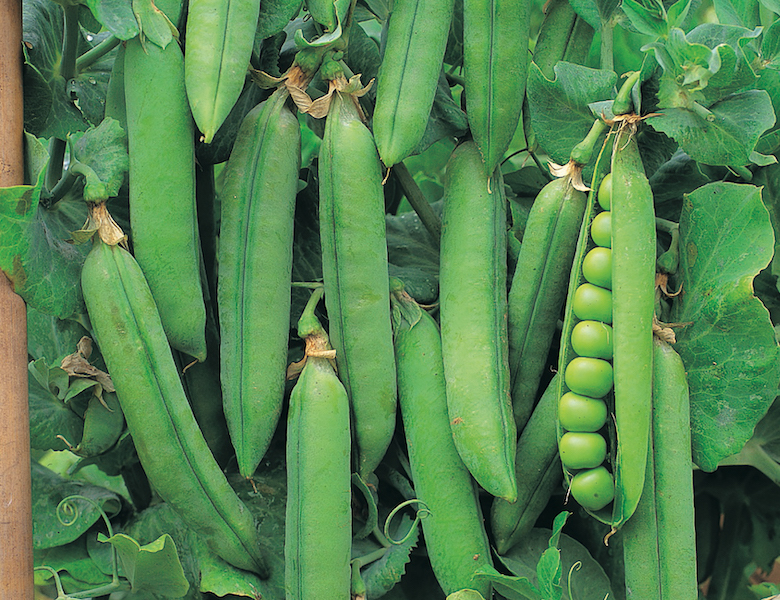
Freshly harvested peas and beans always taste better than supermarket versions
Image: Pea 'Rondo' (Maincrop) from Thompson & Morgan
Peas and beans grow vigorously here in the UK, producing a reliable and tasty crop that’s easy to prepare and freeze for use all year long. If you’d like to sow your own pea and bean seeds, here are some top tips to help you grow strong and healthy harvests.
How to grow broad beans from seed
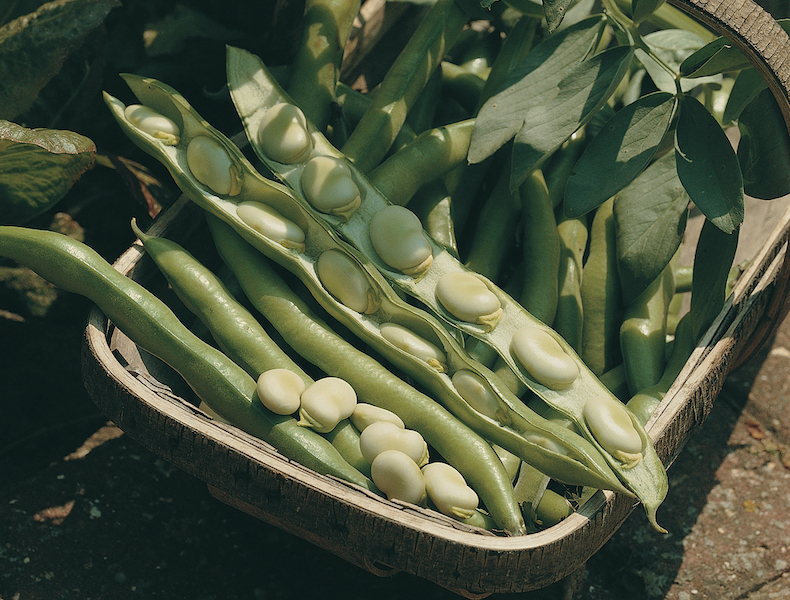
'Bunyard's Exhibition' beans have been a staple in many gardens for over 100 years!
Image: Thompson & Morgan
Sow broad bean seeds in full sun in a spot that’s sheltered from strong winds. For a bumper crop, your soil needs to be well-fed. Prepare the site for your beans by digging in home-made compost, well-rotted farmyard manure or a proprietary organic compost, followed by a dressing of hydrated lime or calcified seaweed. Prior to sowing, give the site 4oz (112g) per square yard/metre of a balanced fertiliser, like fish blood and bone or Growmore.
In areas where mild winters are the norm, try direct sowing in late autumn for a spring harvest. Varieties like 'Aquadulce Claudia', Loretta, or 'The Sutton' make a great choice because they’re hardy enough to withstand a few degrees of frost should the weather turn cold. If you don’t fancy risking the weather, sow the broad beans singly, at a depth of 2” (5cm), in compost-filled pots in a cold greenhouse during late winter for transplanting in the early spring.
Plant young broad bean plants in double rows set 9" (23cm) apart, allowing at least 24” (60cm) between each double row.
As the growing season progresses, broad beans often suffer from blackfly infestation. To get the best from your plants, harvest early. When you see the first small beans have formed, pinch out the growing tip of each plant and cook them like spinach. If blackfly does get a hold, try spraying your plants with a weak solution of washing up liquid and water and consider companion planting. Sowing nasturtiums, calendula, or borage among your beans can help reduce attacks, plus they look lovely and help to attract lots of pollinators.
How to grow runner beans
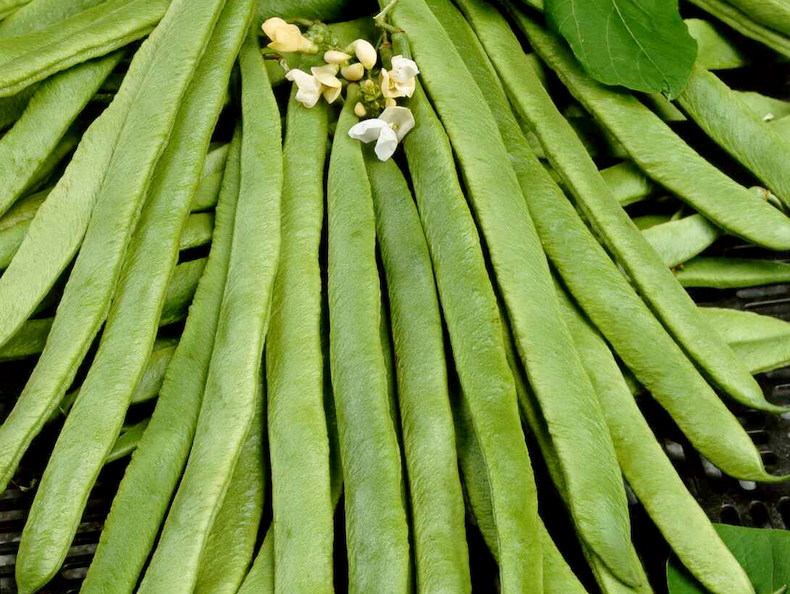
'White Emergo' is a heavy-yielding, weather tolerant runner bean variety
Image: Thompson & Morgan
One of the most popular summer vegetables, runner beans happily grow up your garden fence, or a wigwam of canes to produce a plentiful supply of tender, succulent beans from early summer through to the first frosts.
For best results prepare the site over the winter, digging in compost or well-rotted manure, followed in early spring by a dressing of lime or calcified seaweed. In the spring, give the soil a dressing of a balanced fertiliser at the rate of 4oz (112g) per square yard/metre, and sow the runner bean seeds in rows 2” (5cm) deep, at 12” (30cm) intervals, 18” (45cm) apart.
Delay sowing your beans until all danger of frost has passed and never when the soil is cold and wet. You can easily grow enough runner beans to feed a family of four with just two 15’ (4.5m) rows. If you pick every day or two, these will produce something like 100 to 150lb of fresh beans - probably enough for everyone, plus the neighbours!
How to grow dwarf or French beans from seed
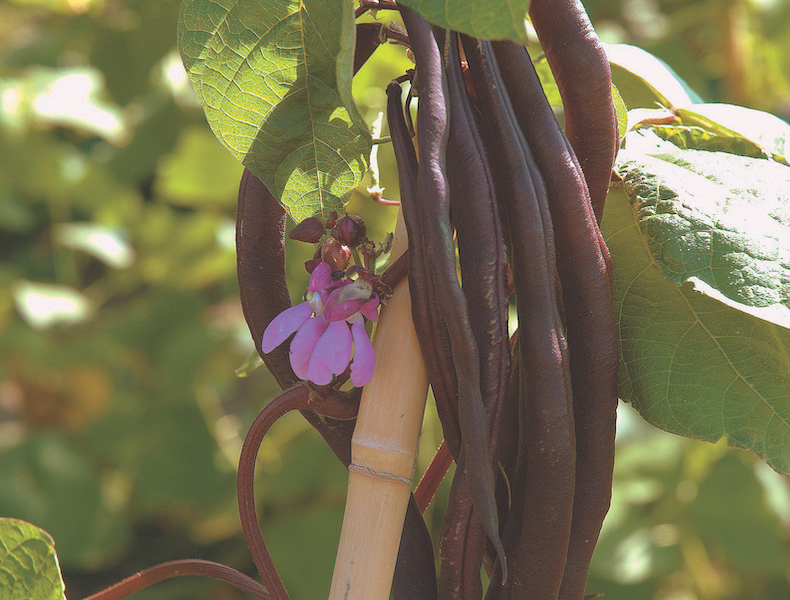
As proven by 'Blauhilde', French beans don't have to be the traditional green colour!
Image: Thompson & Morgan
This crop repays careful preparation of the site as early in the year as possible. Choose an open, sunny position with deep, organically manured and well-drained soil. Just prior to sowing, top dress with a balanced fertiliser. Avoid sowing dwarf and French bean seeds into cold, wet soil because they will just rot. Wait until the soil is nice and warm - a minimum of 50F (10C).
To grow enough beans to feed a family of four, plant three or four rows that are 4.5m long. The beans should be sown 2” (5cm) deep at 9” (23cm) intervals, with the rows 18” (45cm) apart. Alternatively, sow the seed in trays or singly in pots in a frost-free greenhouse for transplanting in late spring.
Cover the rows with pea guards or stretch black cotton along the rows to protect the seedlings from birds. When the seedlings are about 4” (10cm) tall, give support with twiggy sticks or netting supported by stakes.
How to grow peas from seed
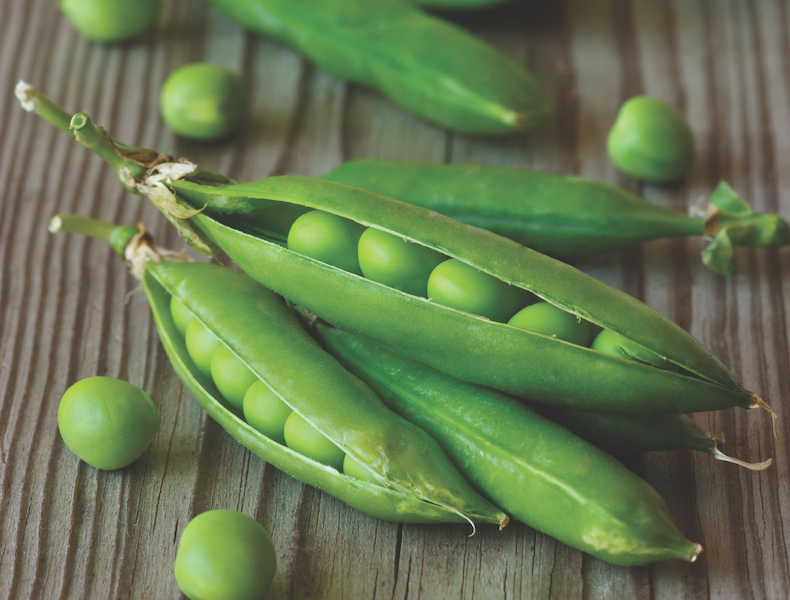
'Meteor' is a dwarf pea variety that can be successfully grown in more exposed conditions
Image: Thompson & Morgan
From February onwards, you can direct sow peas into fertile soil containing lots of organic matter. It’s best to sow small amounts of seed every 10 days - that way you’ll have a steady supply of delicious produce right through the summer, rather than a glut you’ll have to deal with all at once. Sow pea seeds in flat-bottomed drills at a distance of 2" (5cm) apart, and 1.5" (4cm) deep. Allow a distance of 30” (75cm) between rows.
If it’s very cold, start your peas off in the greenhouse or on a sunny windowsill and plant them out when the weather warms. Alternatively, covering your peas with a cloche can help warm the soil to a healthy temperature. Water your peas regularly as the pods set and don't allow the pods to become overripe as this shortens the harvesting period. Any surplus peas can be frozen very successfully.
The pea moth is the major pest here. Small and grey-brown, with white wing tips, they lay their eggs around your pea flowers from June onwards. Once hatched, the caterpillars burrow inside the developing peapods and munch their way through your crop. The best way to avoid pea moth infestation is to time your planting so that your peas have finished flowering before the moths become active. If pea moths do attack, it’s still worth harvesting your crop because they won’t attack all the peas in each pod.
Looking for more info on growing your favourite varieties of peas and beans? Visit our pea and bean hub page for expert growing advice.
Sign Up For Exclusive Special Offers




© 2024 Thompson & Morgan. All rights reserved. A division of Branded Garden Products Limited.
Sign up for exclusive offers!



